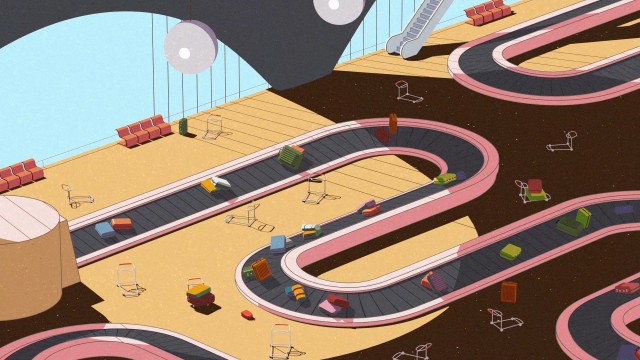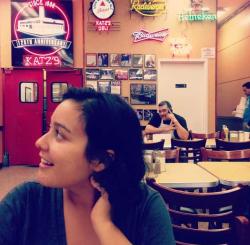Take a second to think about our daily lives…doesn’t the presence of machines feel almost unavoidable in everything we do? Now picture a normal day – people going to work, doing groceries or playing golf – when all of a sudden, human life as we know it is wiped from the picture, only the machines left, stuck in an endless loop. This is the eerie dystopian vision director Geoffroy de Crécy depicts in his mesmerizing 3D animated film Empty Places.
Upon first watching de Crécy’s eight-minute short, it is almost unfathomable to imagine that it was made before lockdowns were part of our lives, the pandemic not even something looming in an unsettling future. Though its storyline may feel prescient, it wasn’t what the director intended, his narrative planned to be much more open to interpretation. There is no conventional story arc here and while at S/W we tend to be attached to a strong narrative, we were all impressed by how subtly the film prompts its audience to make up its own story within the film’s universe.
The idea that sparked de Crécy’s inspiration was actually what he describes as “the hypnotic power of motion”, the mechanical loops of everyday machines and how mesmerising it all can be. By intentionally not focusing on storytelling through a conventional narrative, he chose to rely on a visual aesthetic, strong enough to engage the audience throughout, built around three core elements: “framing, colours and motion”.

“I wanted to achieve what every filmmaker wants: a good combination between framing, colours and motion” – de Crécy’ on his approach to the short’s aesthetic.
Visually, the film is immediately captivating through its colors and the odd poetry that comes from the seeming endlessness of repetition. It’s quite easy to lose yourself in its hypnotic rhythm, the scenes all familiar, everyday life as we know it – just minus the humans. That familiarity adds an apocalyptical layer to the story, the repetition of the machines balancing the unnerving feeling, which grows throughout Empty Places, by being unexpectedly soothing in their predictability. The attention to detail allows the audience to pick up on clues and make of the situation what they will, De Crécy progressing his story by widening the angles of his frames, immersing us deeper into the universe of the film.
Usually, scoring a film with a very well-known and popular classical piece is something I find gimmicky, but De Crécy proves me wrong by accompanying his visuals with Beethoven’s Moonlight Sonata. It’s the perfect choice, the piece echoing the cyclical feel of the film, while also fostering a calm and quiet atmosphere that reinforces how captivating the exploration of this post-apocalyptic world is.
Empty Places premiered in 2020, with a festival career that quickly became virtual. Along the way it picked up awards in Annecy and Anima, making it eligible for Academy Award consideration.

 Céline Roustan
Céline Roustan